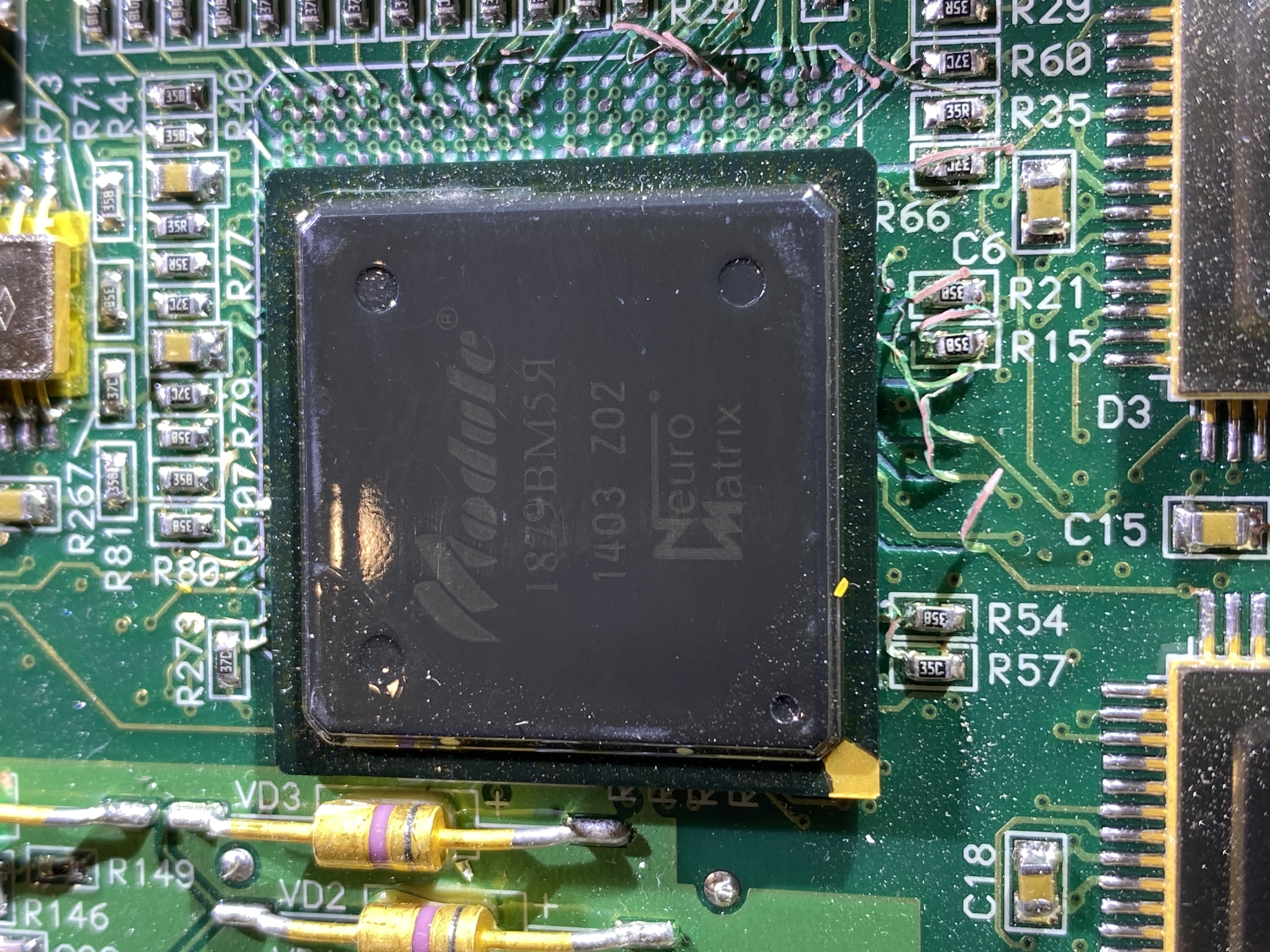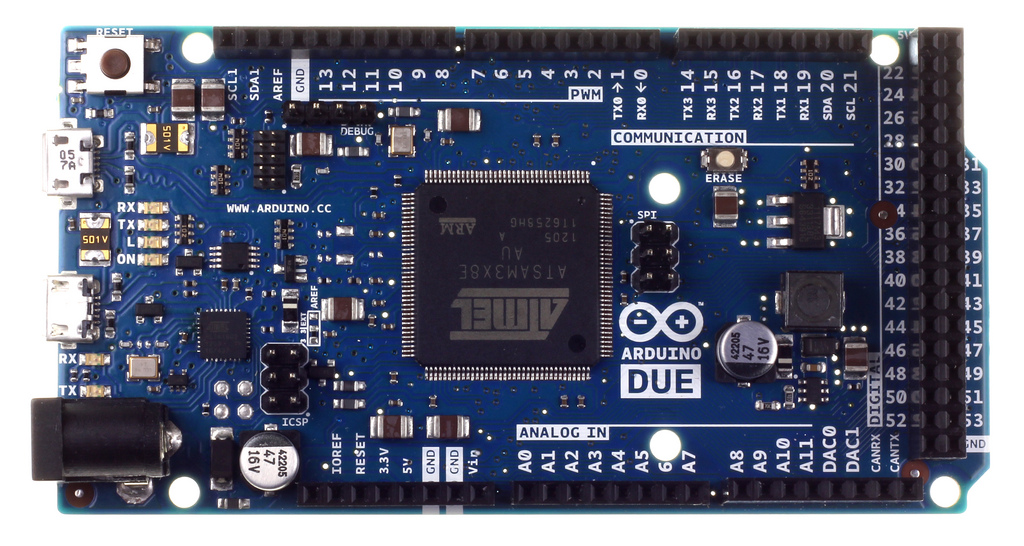|
Cortex-A5
The ARM Cortex-A5 is a 32-bit processor core licensed by ARM Holdings implementing the ARMv7-A architecture announced in 2009. Overview The Cortex-A5 is intended to replace the ARM9 and ARM11 cores for use in low-end devices. The Cortex-A5 offers features of the ARMv7 architecture focusing on internet applications e.g. VFPv4 and NEON advanced SIMD. Key features of the Cortex-A5 core are: * Single-issue, in-order microarchitecture with an 8-stage pipeline * NEON SIMD instruction set extension (optional) * VFPv4 floating-point unit (optional) * Thumb-2 instruction set encoding * Jazelle RCT * 1.57 DMIPS / MHz Chips Several system-on-chips (SoC) have implemented the Cortex-A5 core, including: * Actions Semiconductor ATM7029 (gs702a) is a quad-core Cortex-A5 configuration * AMD Fusion APUs include a Cortex-A5 as a security co-processor * Amlogic S805, M805 and A111 * Analog Devices ADSP-SC57x, ADSP-SC58x series ARM Cortex-A5 + SHARC+ multicore DSP * Atmel SAMA5Dxx * Free ... [...More Info...] [...Related Items...] OR: [Wikipedia] [Google] [Baidu] |
List Of Qualcomm Snapdragon Devices
This is a list of Qualcomm Snapdragon systems on chips (SoC) made by Qualcomm for use in smartphones, tablets, laptops, 2-in-1 PCs, smartwatches, and smartbooks devices. Before Snapdragon SoC made by Qualcomm before it was renamed to Snapdragon. Snapdragon S series Snapdragon S1 Snapdragon S1 notable features over its predecessor (MSM7xxx): * CPU features ** 1 core up to 1 GHz Scorpion or Cortex-A5 or ARM11 ** Up to 256K L2 cache ** Up to 32K+32K L1 cache * GPU features ** Adreno 200 (From Software rendered or Adreno 130) ***OpenGL ES 1.1 ***OpenVG 1.0 *** Direct3D Mobile *** Unified shader model 5-way VLIW * DSP features ** Hexagon QDSP5 at 350 MHz or Hexagon QDSP6 600 MHz * ISP features ** Up to 12 MP camera * Modem and wireless features ** External Bluetooth 4.0 or external Bluetooth 2.0/2.1 on some models * 45 or 65 nm manufacturing technology Snapdragon S2 Snapdragon S2 notable features over its pred ... [...More Info...] [...Related Items...] OR: [Wikipedia] [Google] [Baidu] |
Exynos
Exynos, formerly Hummingbird (), is a series of ARM-based system-on-chips developed by Samsung Electronics' System LSI division and manufactured by Samsung Foundry. It is a continuation of Samsung's earlier S3C, S5L and S5P line of SoCs. Exynos is mostly based on the ARM Cortex cores with the exception of some high end SoCs which featured Samsung's proprietary "M" series core design; though from 2021 onwards even the flagship high-end SoC's will be featuring ARM Cortex cores. History In 2010, Samsung launched the Hummingbird S5PC110 (now Exynos 3 Single) in its Samsung Galaxy S smartphone, which featured a licensed ARM Cortex-A8 CPU. This ARM Cortex-A8 was code-named Hummingbird. It was developed in partnership with Intrinsity using their FastCore and Fast14 technology. In early 2011, Samsung first launched the Exynos 4210 SoC in its Samsung Galaxy S II mobile smartphone. The driver code for the Exynos 4210 was made available in the Linux kernel and support was ... [...More Info...] [...Related Items...] OR: [Wikipedia] [Google] [Baidu] |
Thumb-2
ARM (stylised in lowercase as arm, formerly an acronym for Advanced RISC Machines and originally Acorn RISC Machine) is a family of reduced instruction set computer (RISC) instruction set architectures for computer processors, configured for various environments. Arm Ltd. develops the architectures and licenses them to other companies, who design their own products that implement one or more of those architectures, including system on a chip (SoC) and system on module (SOM) designs, that incorporate different components such as memory, interfaces, and radios. It also designs cores that implement these instruction set architectures and licenses these designs to many companies that incorporate those core designs into their own products. There have been several generations of the ARM design. The original ARM1 used a 32-bit internal structure but had a 26-bit address space that limited it to 64 MB of main memory. This limitation was removed in the ARMv3 series, which ha ... [...More Info...] [...Related Items...] OR: [Wikipedia] [Google] [Baidu] |
ARM Architecture
ARM (stylised in lowercase as arm, formerly an acronym for Advanced RISC Machines and originally Acorn RISC Machine) is a family of reduced instruction set computer (RISC) instruction set architectures for computer processors, configured for various environments. Arm Ltd. develops the architectures and licenses them to other companies, who design their own products that implement one or more of those architectures, including system on a chip (SoC) and system on module (SOM) designs, that incorporate different components such as memory, interfaces, and radios. It also designs cores that implement these instruction set architectures and licenses these designs to many companies that incorporate those core designs into their own products. There have been several generations of the ARM design. The original ARM1 used a 32-bit internal structure but had a 26-bit address space that limited it to 64 MB of main memory. This limitation was removed in the ARMv3 series, w ... [...More Info...] [...Related Items...] OR: [Wikipedia] [Google] [Baidu] |
Actions Semiconductor
Actions Semiconductor Co. Ltd. () is a Chinese fabless semiconductor company founded in 2000 and headquartered in Zhuhai, Guangdong province. The company has about 600 employees and designs SoCs for tablets, digital audio players, photo viewers and related products. Products The following is a list of system-on-chips developed and marketed by Actions Semiconductor, mainly targeting tablets. Adoption S1 MP3 players use chipsets designed by Actions. In 2012, Actions Semiconductor produced the ATM7029 which is a quad-core ARM Cortex-A5-based SoC using Vivante Corporations GC1000 GPU. This SoC has been used in the Ainol NOVO10 Hero II tablet and other low end tablets. For Q2 2014, Actions was reported to be fourth largest supplier of tablet processors to the Chinese market. Legal cases At one point, Actions was sued by SigmaTel with SigmaTel prevailing. The findings were that Actions infringed upon SigmaTel by directly copying the ASICs designed by SigmaTel, once a ... [...More Info...] [...Related Items...] OR: [Wikipedia] [Google] [Baidu] |
ARM Holdings
Arm is a British semiconductor and software design company based in Cambridge, England. Its primary business is in the design of ARM processors (CPUs). It also designs other chips, provides software development tools under the DS-5, RealView and Keil brands, and provides systems and platforms, system-on-a-chip (SoC) infrastructure and software. As a "holding" company, it also holds shares of other companies. Since 2016, it has been owned by Japanese conglomerate SoftBank Group. While ARM CPUs first appeared in the Acorn Archimedes, a desktop computer, today's systems include mostly embedded systems, including ARM CPUs used in virtually all smartphones. Systems such as iPhones and Android smartphones frequently include many chips, from many different providers, that include one or more licensed Arm cores, in addition to those in the main Arm-based processor. Arm's core designs are also used in chips that support all the most common network-related technologies. Pr ... [...More Info...] [...Related Items...] OR: [Wikipedia] [Google] [Baidu] |
NeuroMatrix
NeuroMatrix is a digital signal processor (DSP) series developed by NTC Module. The DSP has a VLIW/SIMD architecture. It consists of a 32-bit RISC core and a 64-bit vector co-processor. The vector co-processor supports vector operations with elements of variable bit length (US Pat. 6539368 B1) and is optimized to support the implementation of artificial neural networks. From this derives the name NeuroMatrix Core (NMC). Newer devices contain multiple DSP cores and additional ARM or PowerPC 470 cores. Overview Details L1879VM1 * russian: Л1879ВМ1 * start of development in 1996, start of production in 1999 at Samsung 1879VM2 * russian: 1879ВМ2 * manufactured at Fujitsu 1879VM3 * russian: 1879ВМ3 * manufactured at Fujitsu 1879VM5Ya * russian: 1879ВМ5Я * manufactured at Fujitsu Japan 1879VM6Ya * russian: 1879ВМ6Я * manufactured at GlobalFoundries Malaysia 1879VM8Ya * russian: 1879ВМ8Я * system-on-a-chip (SoC) containing 4 computing clusters, each consi ... [...More Info...] [...Related Items...] OR: [Wikipedia] [Google] [Baidu] |
AT91SAM
Atmel ARM-based processors are microcontrollers and microprocessors integrated circuits, by Microchip Technology (previously Atmel), that are based on various 32-bit ARM processor cores, with in-house designed peripherals and tool support. Overview ARM licenses the core design for a series of 32-bit processors. ARM does not manufacture any complete silicon products, just intellectual property (IP). The ARM processors are RISC (reduced instruction set computing). This is similar to Microchip’s AVR 8-bit products, a later adoption of RISC architecture. Whereas the AVR architecture used Harvard architecture exclusively, some ARM cores are Harvard (Cortex-M3) and others are Von Neumann architecture (ARM7TDMI). Semiconductor companies such as Microchip take the ARM cores, which use a consistent set of instructions and register naming, and add peripheral circuits such as ADCs (analog to digital converters), clock management, and serial communications such as USART, SPI, I2C, CAN, L ... [...More Info...] [...Related Items...] OR: [Wikipedia] [Google] [Baidu] |
Vybrid Series
The Vybrid Series is a low power System on chip from Freescale Semiconductor with ARM Cortex-A5 The ARM Cortex-A5 is a 32-bit processor core licensed by ARM Holdings implementing the ARMv7-A architecture announced in 2009. Overview The Cortex-A5 is intended to replace the ARM9 and ARM11 cores for use in low-end devices. The Cortex-A5 off ... and optional Cortex-M4 cores. The full featured ''VF6xx'' comes with asymmetrical multiprocessing using both cores. Lower cost alternative such as the ''VF5xx'' and ''VF3xx'' only support the ''ARM Cortex-A5''. The ''ARM Cortex-A5'' cores run from 266 MHz to 500 MHz depending on package options and ''ARM Cortex-M4'' Cores at 168 MHz if present. References External links Freescale processors roadmap by series on EASA Freescale Semiconductor NXP Semiconductors {{compu-hardware-stub ... [...More Info...] [...Related Items...] OR: [Wikipedia] [Google] [Baidu] |
Out-of-order Execution
In computer engineering, out-of-order execution (or more formally dynamic execution) is a paradigm used in most high-performance central processing units to make use of instruction cycles that would otherwise be wasted. In this paradigm, a processor executes instructions in an order governed by the availability of input data and execution units, rather than by their original order in a program. In doing so, the processor can avoid being idle while waiting for the preceding instruction to complete and can, in the meantime, process the next instructions that are able to run immediately and independently. History Out-of-order execution is a restricted form of data flow computation, which was a major research area in computer architecture in the 1970s and early 1980s. The first machine to use out-of-order execution was the CDC 6600 (1964), designed by James E. Thornton, which uses a scoreboard to avoid conflicts. It permits an instruction to execute if its source operand (read ... [...More Info...] [...Related Items...] OR: [Wikipedia] [Google] [Baidu] |
AMD Fusion
AMD Accelerated Processing Unit (APU), formerly known as Fusion, is a series of 64-bit microprocessors from Advanced Micro Devices (AMD), combining a general-purpose AMD64 central processing unit (CPU) and integrated graphics processing unit (IGPU) on a single die. AMD announced the first generation APUs, ''Llano'' for high-performance and ''Brazos'' for low-power devices, in January 2011. The second generation ''Trinity'' for high-performance and ''Brazos-2'' for low-power devices were announced in June 2012. The third generation ''Kaveri'' for high performance devices were launched in January 2014, while ''Kabini'' and ''Temash'' for low-power devices were announced in the summer of 2013. Since the launch of the Zen microarchitecture, Ryzen and Athlon APUs have released to the global market as Raven Ridge on the DDR4 platform, after Bristol Ridge a year prior. AMD has also supplied semi-custom APUs for consoles starting with the release of Sony PlayStation 4 and Microsoft ... [...More Info...] [...Related Items...] OR: [Wikipedia] [Google] [Baidu] |



-top_PNr°0359.jpg)